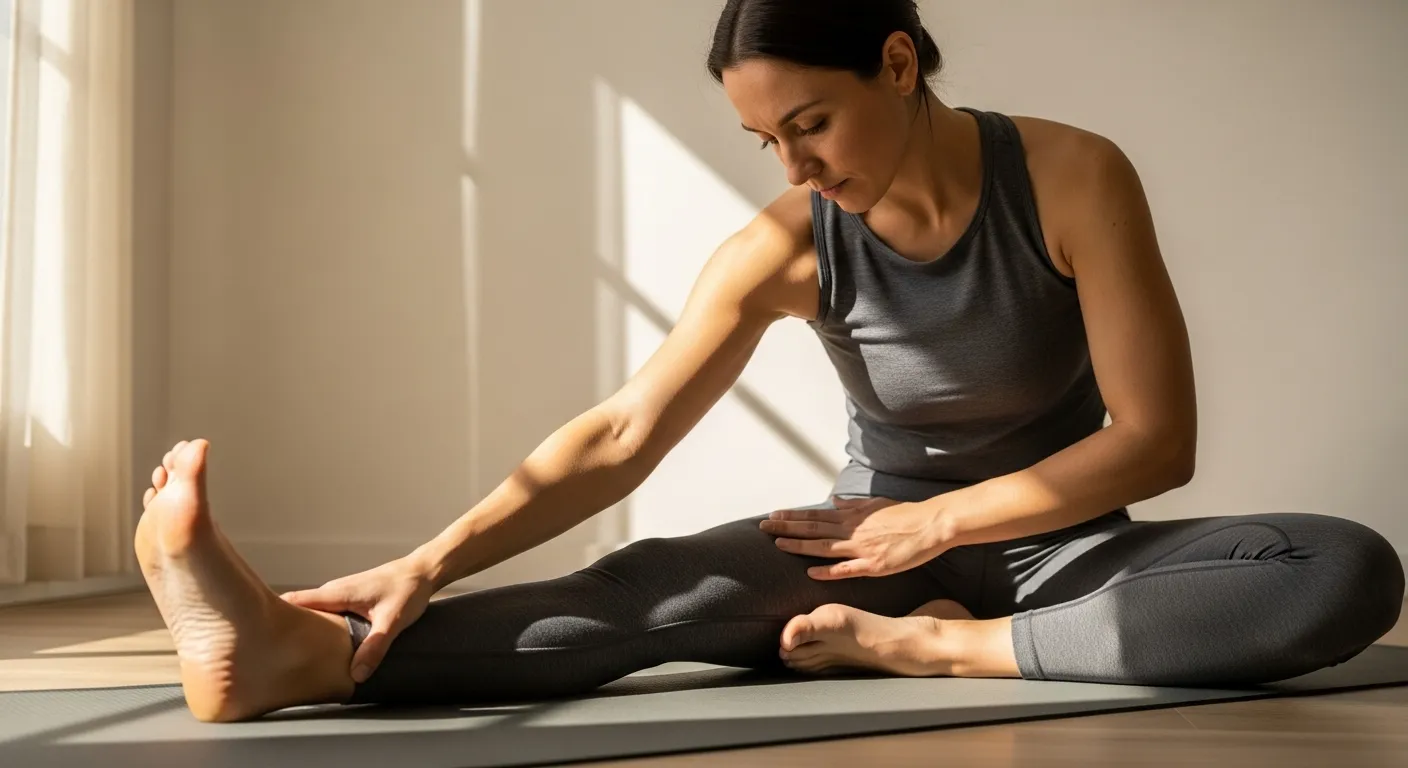Improve Posture with Quadratus Lumborum Exercises
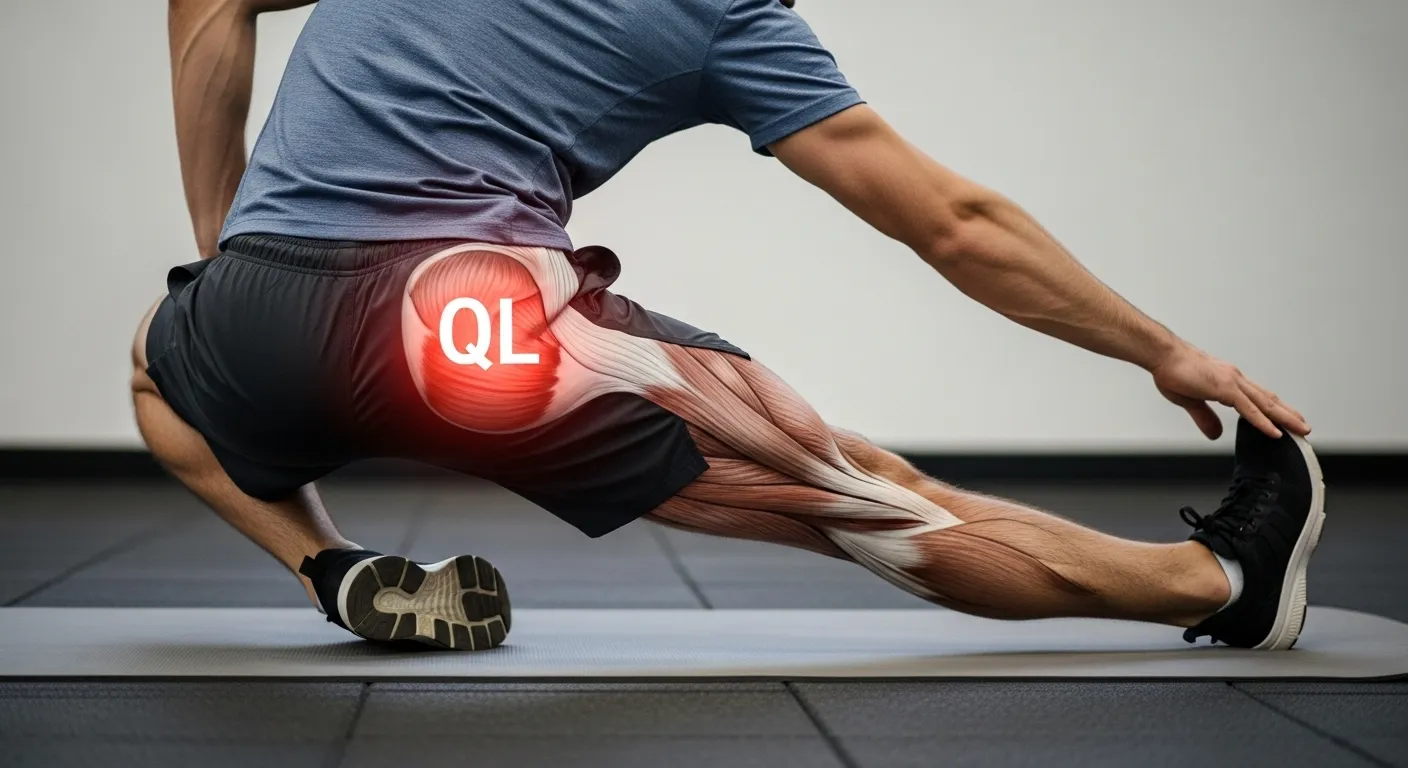
I’ve worked with clients who complain about tight backs, uneven hips, and poor posture and more often than not, the real problem isn’t where they feel pain. It’s deeper. The quadratus lumborum. That small but mighty muscle tucked on each side of your lower back. Most people don’t even know it exists until it starts screaming.
If you’ve been looking for ways to fix that nagging lower back tension or improve your posture, learning the right quadratus lumborum exercises can change a lot. I’ve seen it happen, clients stand taller, move smoother, even breathe easier once that muscle gets stronger and looser.
What the Quadratus Lumborum Actually Does
Let’s make this simple. The quadratus lumborum muscle (QL) runs from your hip bone up to your lower ribs, attaching along your spine. You’ve got one on each side. Together, they help you bend sideways, stabilize your lower back, and keep your spine upright when you walk or lift.
When one Quadratus lumborum gets tight or weak, your whole system compensates. That’s when you start noticing hip hikes, one shoulder sitting higher, or that dull ache in your lower back after sitting too long.
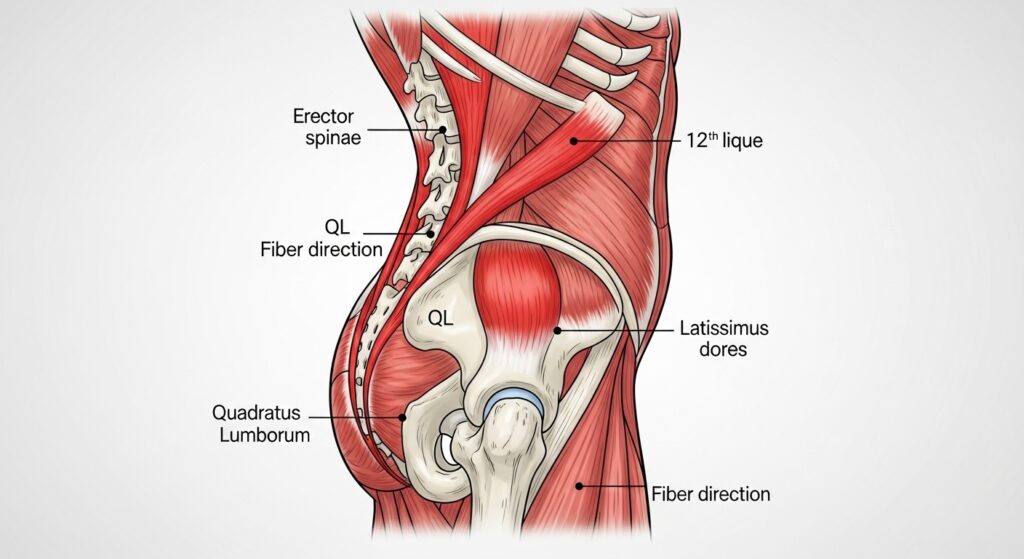
How Tightness Starts
I’ve had athletes, office workers, even yoga teachers come in with quadratus lumborum pain. Usually, it’s not a single injury. It’s habit. Sitting on one hip more than the other, carrying bags on the same shoulder, sleeping curled up unevenly. Over time, your QL becomes overworked on one side and lazy on the other.
It’s tricky, because it’s a deep stabilizer. You don’t feel it working like your abs or glutes. But when it’s tight, it pulls on the lumbar spine and throws your alignment off.
That’s where quadratus lumborum exercises at home or in the gym come in. You can stretch, release, and strengthen that muscle to balance things again.
Common Signs of QL Imbalance
Here’s what I often notice during posture assessments:
| Symptom | What It Might Mean |
|---|---|
| One hip sits higher | One QL tighter than the other |
| Lower back ache on one side | Muscle overuse or weakness |
| Pain when bending sideways | Limited flexibility in QL |
| Trouble sitting long hours | Weak QL + poor core support |
| Rib discomfort when twisting | QL or oblique tension |
If two or three of those sound familiar, your QL might be calling for help.

My Go-To Quadratus Lumborum Exercises
Let’s start with mobility. If your quadratus lumborum tightness test feels off, meaning you can’t bend to one side evenly, it’s time to stretch.
Here are my top picks:
1. Standing Side Bend Stretch
Simple but effective. Stand tall, feet shoulder-width. Reach your right arm overhead and slowly lean left. Don’t twist, just bend. You’ll feel it along your side. Hold 20 to 30 seconds, switch.
2. Seated QL Stretch
Sit on a chair, one hand holding the seat edge. Reach the other arm over your head and bend sideways. Keep your hips grounded. Perfect for quick breaks at the desk.
3. Child’s Pose with Side Reach
From yoga, but gold for your lower back. Knee on the floor, sit back on your heels, reach your arms forward, then slide your hands slightly to one side. That shift stretches your QL deeply.
4. Wall Lean Stretch
Stand beside a wall, feet together. Press your hip gently toward the wall while reaching your opposite arm overhead. Subtle movement, big stretch.
These quadratus lumborum stretch variations are my go-tos for both athletes and office workers.
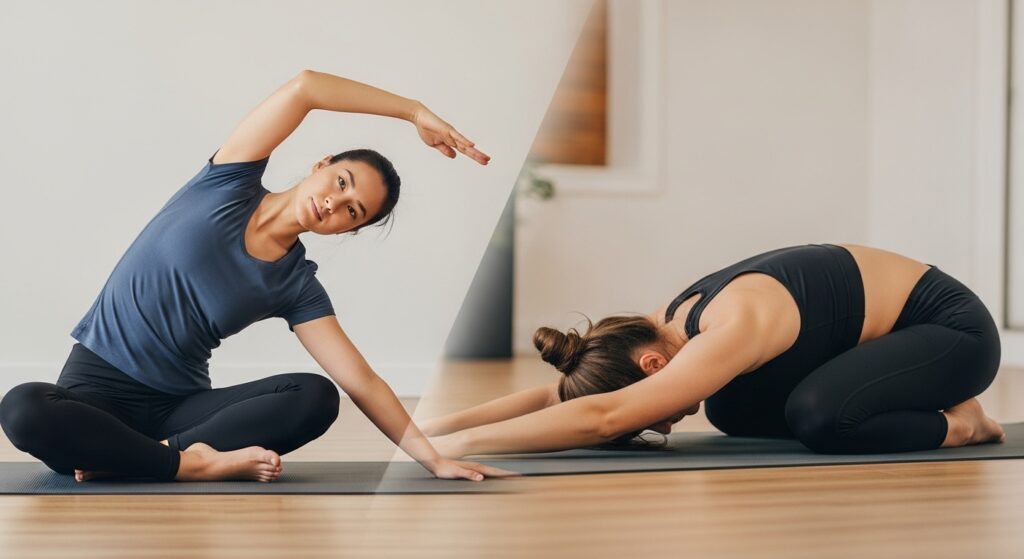
QL Strengthening Routine: Building Stability
Once you’ve improved flexibility, it’s time to strengthen. The quadratus lumborum stabilizes your lumbar spine, meaning it helps control small movements and protect your back. Weak QL muscles often cause instability or compensation through the obliques and glutes.
Here’s a basic QL strengthening routine I give to beginners and clients recovering from tightness:
| Exercise | Focus | Sets | Notes |
|---|---|---|---|
| Side Plank Hold | Core stability workouts | 3 x 20s each side | Keep hips level |
| Hip Hike Exercise | Isolate QL muscle | 3 x 12 each leg | Stand on step, drop & lift one hip |
| Bird Dog | Lower back strengthening exercises | 3 x 10 | Move slow, control each motion |
| Side-Lying Leg Raise | Functional core training | 3 x 15 | Works oblique and QL together |
This combination hits your QL, obliques, and glutes, giving you balance and better posture support.
The Hidden Connection Between QL and Core
People think “core” just means abs. But that’s not true. The QL plays a quiet but powerful role in your core stability workouts. It connects your ribs to your hips, literally holding your trunk together when you move.
That’s why I often include QL work alongside oblique and QL workouts or even glute activation drills. When your side stabilizers and QL fire together, posture naturally improves. You stop leaning to one side, your pelvis evens out, and your spine stacks better.
QL Trigger Point Release: When Stretching Isn’t Enough
Sometimes stretching doesn’t solve everything. When clients have stubborn knots or chronic quadratus lumborum pain, I go for trigger point release. You can do this at home using a massage ball.
Lie on your back near a wall, place a ball under your lower back just above your hip bone, and shift slowly side to side. It’s tender, so take it easy. Breathe deeply. The goal is release, not torture.
This helps with quadratus lumborum pain relief and reduces tension that contributes to lower back tightness.
Daily Habits That Tighten the QL
- Sitting unevenly (crossed legs, slouching on one side)
- Standing with weight shifted to one leg
- Carrying heavy bags on one shoulder
- Sleeping curled up to one side every night
Fixing these little things can help keep the quadratus lumborum from being out of balance.
How the QL Affects Posture
Think of your body as a tent. The Quadratus Lumborum are like ropes holding one side steady. If one rope tightens, the whole tent tilts. That’s what happens when one QL dominates the other, your spine curves slightly, shoulders tilt, hips rotate.
Posture correction exercises target these imbalances. When I work with clients, I pair QL work with glute strengthening and mid-back mobility. Together, they realign posture naturally.
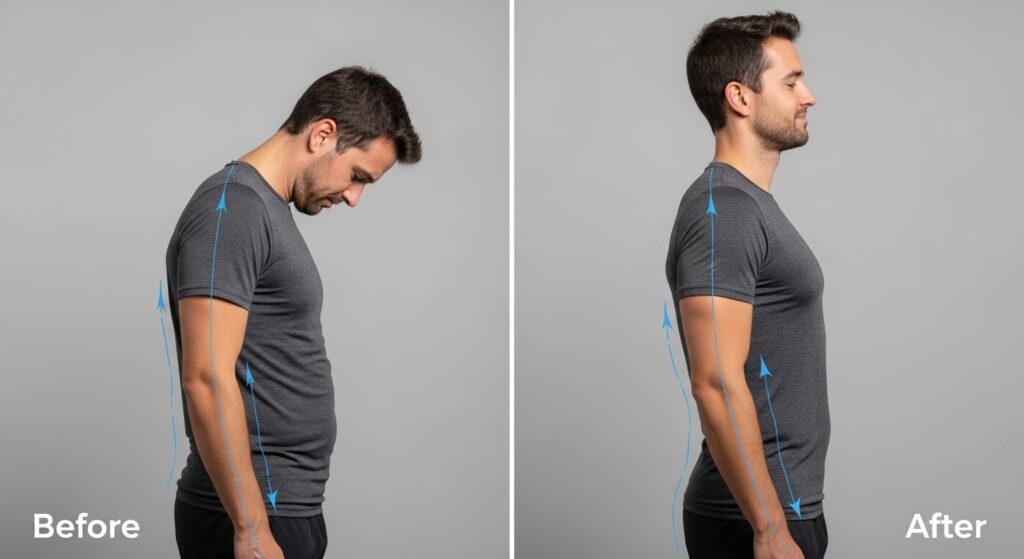
Best QL Mobility and Stretching Plan
If you train regularly, here’s a simple weekly plan to improve mobility and posture:
| Day | Focus | Example Exercises |
|---|---|---|
| Mon | Stretch | Standing side bend, seated QL stretch |
| Tue | Strength | Hip hike, side plank |
| Wed | Mobility | Child’s pose, wall lean |
| Thu | Core | Bird dog, side plank variations |
| Fri | Recovery | Trigger point release |
Consistency matters more than intensity. Gentle, regular movement keeps the QL happy.
How It Feels When the QL Finally Loosens Up
It’s hard to describe, but clients often say they feel “even” again. One told me, “I didn’t realize how tilted I’d been until it went away.” That’s the QL unlocking. When it relaxes, your pelvis evens out, your walk feels lighter, and your back doesn’t ache halfway through the day.
That’s why I’m a big believer in functional core training, not just crunches, but exercises that make your body work together.
Quick Fixes vs. Real Results
You can’t foam roll your way out of every back issue. You really make progress when you do QL flexibility exercises, lower back strengthening drills, and make tiny changes to your daily habits. It’s about awareness. How you sit, stand, and move.
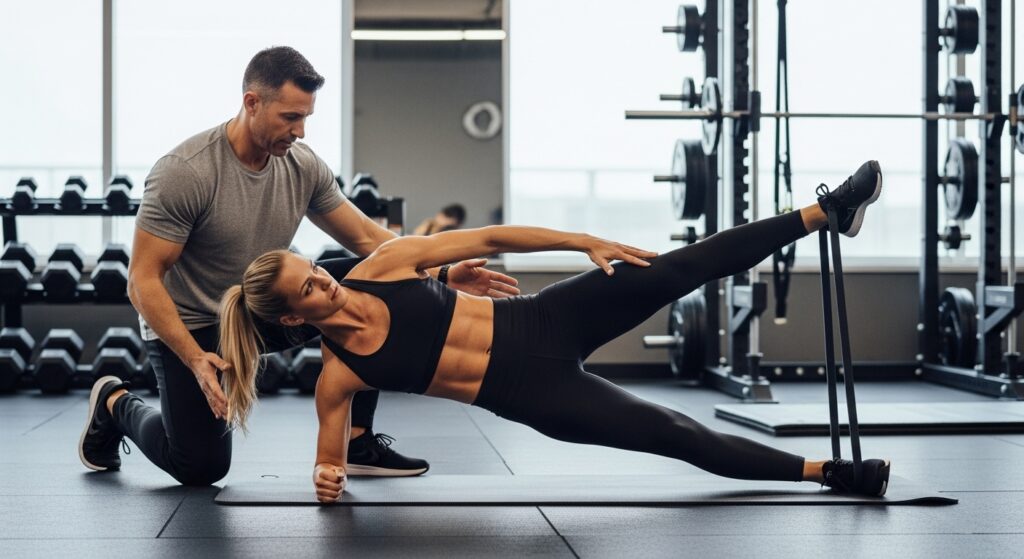
When to Seek Help
If your pain doesn’t ease after a few weeks, or it shoots down your leg, don’t push through. Sometimes it’s not just tight Quadratus Lumborum, it could involve the spine or nerves. In that case, see a physiotherapist for proper assessment.
Quick Tips for Maintaining a Strong QL
- Stretch your sides daily.
- Avoid sitting more than 45 minutes without standing.
- Train your obliques and glutes regularly.
- Sleep on a firm surface with neutral spine.
- Keep your breathing deep, it relaxes the QL over time.
Small habits like these build real, long-term lumbar spine stability.
FAQs
1. What are the best exercises for quadratus lumborum pain?
Side plank, hip hike, and gentle side bends work best to reduce tension while strengthening the QL.
2. How do I stretch the quadratus lumborum at home?
Use seated side bends or child’s pose with side reach. They’re easy and safe for most people.
3. Can weak QL muscles cause poor posture?
Yes. Weak or tight QL muscles create imbalance, making one hip higher and pulling the spine out of line.
4. How often should I do quadratus lumborum exercises?
Three to four times a week is enough. Mix stretching and strengthening for best results.
5. How do I know if my QL is tight?
You’ll feel uneven when you bend to the side, or your lower back will hurt on one side.

I’m Benjamin Clark, dedicated to elevating your athletic performance. Get targeted fitness plans, injury prevention techniques, sports psychology insights, and the latest in nutrition. Let’s train smarter.


